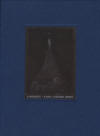A Bouquet
It’s hard to imagine a more powerful and enduring genre than the folk tale. Few other literary types so completely cut across culture and time, artfully explicating the moral drama of humanity through stories and characters. While elements of particular folk tales are clearly specific to a singular culture, the narrative elements and arcs highlight a morphology of structure that demands engagement as it highlights a broader pattern. Indeed, in the space between folk tale, myth, and meaning lies the spectrum of the human condition—the foibles, the pettiness, but also the redemption. Undeniably, the folk tale operates in the collective cultural conciseness and history, demonstrating anthropologist Claude Levi-Strauss’s point that “I therefore claim to show, not how men think in myths, but how myths operate in men’s minds without their being aware of the fact.” A Bouquet: of Czech Folktales by Karel Jaromír Erben is no exception.
It’s hard to imagine a more powerful and enduring genre than the folk tale. Few other literary types so completely cut across culture and time, artfully explicating the moral drama of humanity through stories and characters. While elements of particular folk tales are clearly specific to a singular culture, the narrative elements and arcs highlight a morphology of structure that demands engagement as it highlights a broader pattern. Indeed, in the space between folk tale, myth, and meaning lies the spectrum of the human condition—the foibles, the pettiness, but also the redemption. Undeniably, the folk tale operates in the collective cultural conciseness and history, demonstrating anthropologist Claude Levi-Strauss’s point that “I therefore claim to show, not how men think in myths, but how myths operate in men’s minds without their being aware of the fact.” A Bouquet: of Czech Folktales by Karel Jaromír Erben is no exception.
Vividly translated, anthologized, and illustrated, Twisted Spoon’s publication of Erben’s classic compilation highlights the uniqueness of the Czech folk tale and juxtaposes it against the classic metaphoric allegories of other folk or fairy tales. In her introduction, translator Marcela Malek Sulak highlights the timeliness and relevance of this translation. She emphasizes the necessity of A Bouquet to the national Czech identity—as illustrated by the folk tales recorded in Czech (not Latin), thus linking Erben’s original compilation and recording of the tales to the broader movement of European Romanticism. Sulak walks the reader through the importance of the individual characters in various tales and the outcome of the moral (or even nationalistic) agendas that the folk tales articulate. From this, we see a valuation and a belief that suffering in the human condition can lead to redemption and that
. . . a loving and merciful Christian God can save a soul predestined to hell. Of course, the hero’s life on earth is thoroughly consumed in penance and trial, but he never complains of his fate. This story [“Zohar’s Bed”] may have had some resonance in Bohemia at the time, a land that was ruled by conquerors, for the lot [for “Zohar’s Bed”] is set in motion by a father who has sold his son’s soul to the devil in exchange for material wealth in the world before the tale begins.
Moreover, A Bouquet is considered to be one of three seminal works of Czech literature—Sulak’s is the first English translation, and her work aims to be true to the original prosaic cadence and poetry of Czech folklore. Indeed, it is more than apparent that her work fills both a scholarly and a literary void.
The thirteen tales that comprise Erben’s Bouquet are elegantly simple, yet understatedly and fantastically complex. Twisted Spoon’s book design is beautiful, and the accompanying illustrations are hauntingly brilliant. Readers are reminded of the myth and meaning imbued into cultural narratives that surround folk tales and can easily appreciate A Bouquet’s characters, its stories, and the humanistic drama they enact.





